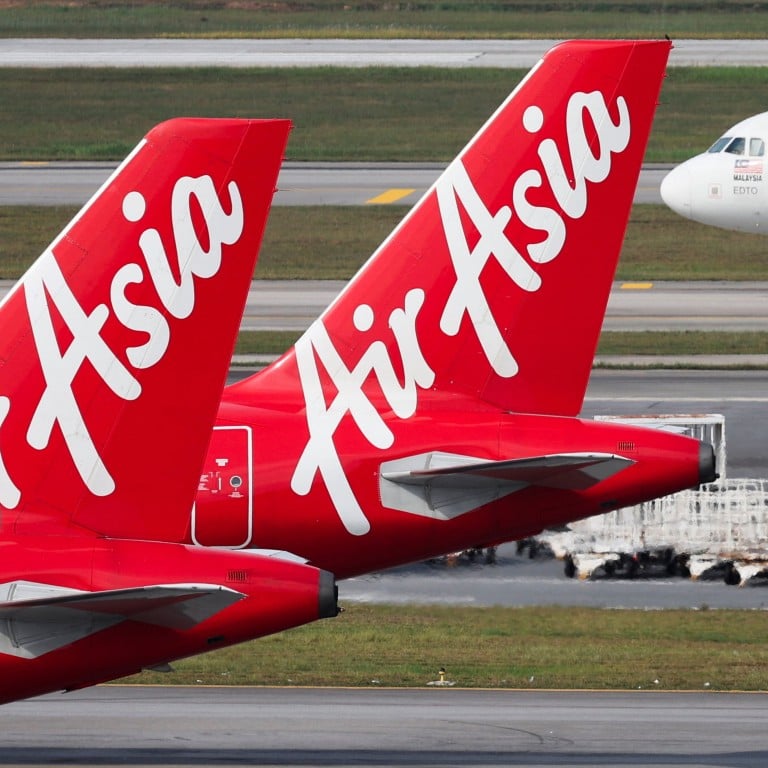
AirAsia targets China’s ‘still very big for us’ smaller cities such as Xian in bet on budget-conscious fliers, appetite for Southeast Asia
- AirAsia will record ‘bigger’ growth by providing direct connectivity from mainland China’s smaller cities, CEO Tony Fernandes tells the Post
- Airline parent Capital A Berhad and Ant Group sign deal that will allow passengers to save on payment costs when using Alipay+ services to buy air tickets
Malaysian budget carrier AirAsia plans to start new routes connecting smaller mainland Chinese cities with Southeast Asia to tap a recovery in the country’s travel market, as consumers become more budget conscious. It has also signed a deal with Ant Group that will create savings for Alipay+ users.
The expansion plan is in line with AirAsia’s efforts to chase annualised 15 per cent growth in its Chinese business over the next few years.
“There are two parts of growth here,” Fernandes said. “One is new cities, but the bigger one for me is to provide direct connectivity from the smaller cities.
“Your smaller cities are still very big for us.”
AirAsia, founded in 2001 by Fernandes with two aircraft, offers 17 routes to the mainland with about 160 flights a week. The airline links major Chinese cities such as Beijing, Shanghai and Guangzhou with Southeast Asian destinations like Kuala Lumpur, Kota Kinabalu and Johor Bahru.

“What I found in an economic slowdown is that people generally go to lower-cost products and lower-cost airlines,” Fernandes said. “I guess we will benefit.
“Maybe they don’t go to Europe or they don’t go to America, but they’ll come to Southeast Asia.”
Alipay+ services are geared towards customers outside the mainland and are distinct from Alipay services used by customers on the mainland. Alipay+ helps businesses take cross-border electronic payments from travellers using their own local apps, and currently supports 25 digital wallets including Alipay.
Planes are full, airfares are high – and AirAsia’s never been more excited
Transaction volumes via Alipay+ outside the mainland returned to pre-pandemic levels during the weeklong Lunar New Year holiday last month, Yang Peng, CEO of Ant International, said during a media briefing on Friday.
“Transactions in markets like Malaysia and Thailand, where AirAsia has a competitive edge, grew fast,” he said. “We saw diverse consumer activities there. Asia will outgrow any other foreign market in terms of China’s outbound travel.”
The two companies also agreed to collaborate on digital marketing and sponsorship opportunities to drive growth.
Malaysia’s Capital A will merge AirAsia brands, as CEO Fernandes set to retire
AirAsia, one of the largest budget airline operators in Asia, derives a fifth of its business from the mainland market, according to Fernandes. The company’s first flight connecting Malaysia with China landed in Hangzhou, the capital of China’s eastern Zhejiang province, in 2008.
The number of outbound tourists jumped 266.5 per cent from a year earlier to 424 million in 2023, according to China’s National Immigration Administration.
“Malaysia, Thailand and Singapore are among the most popular overseas tourist destinations for Chinese travellers and low-cost air fares will surely attract more middle-income consumers in China’s second- and third-tier cities,” said Li Wenjie, CEO of Shanghai Yaheng International Travel. “There is potential to tap this demand but a slowing economy might affect the travel market this year.”
In the first half of 2023, China’s travel sector raked in 2.3 trillion yuan (US$318.6 billion) in revenue, up 96 per cent year on year, according to Ministry of Culture and Tourism data. The revenue was, however, still 17 per cent shy of the 2.78 trillion yuan recorded in the same period in 2019, before the coronavirus struck.

